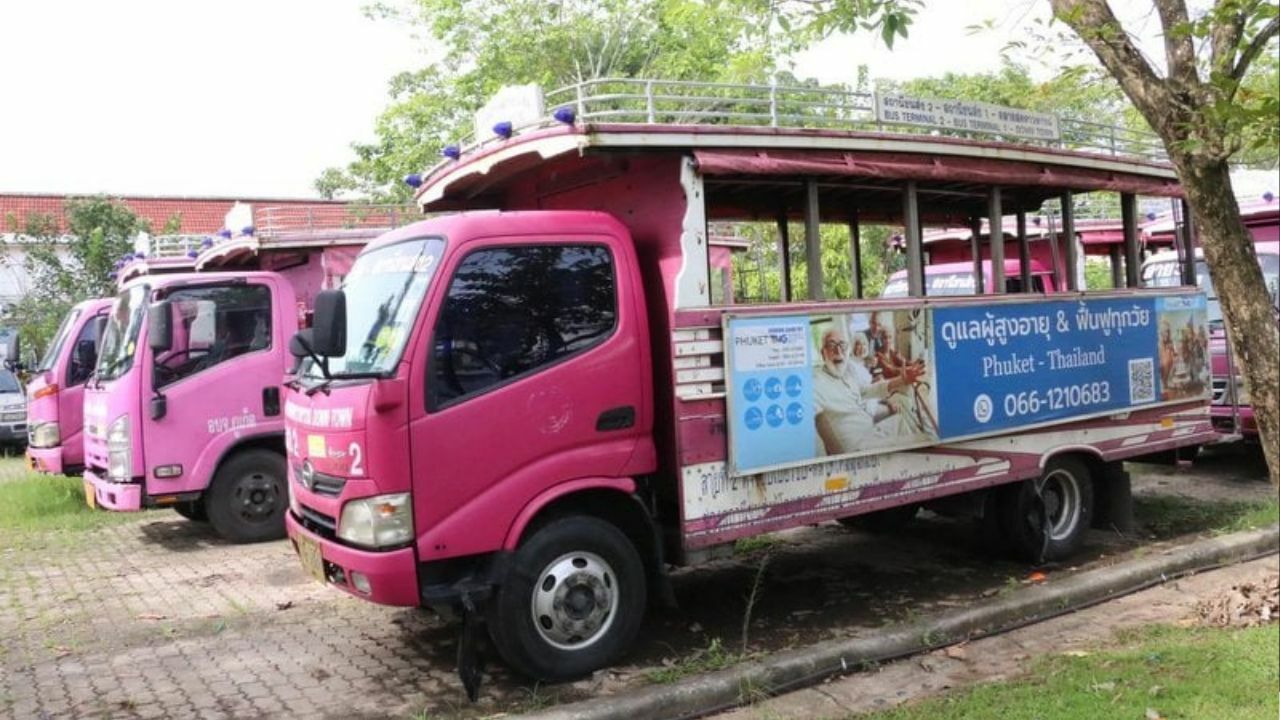

Phuket’s well-known pink Pho Thong buses, which have been a staple of the town’s streets for decades, have been replaced by 24 new electric buses from China, each costing over 5 million baht.
These iconic vehicles were an integral part of Phuket Town’s charm, easily recognised by their simple design, which included six-wheeled flatbed trucks modified with wooden bench seats and railings. The Pho Thong buses were introduced in April 2008 under the leadership of Paiboon Upatising, then President of the Phuket Provincial Administrative Organisation (PPAO).
Named Pho Thong due to the Hokkien pronunciation of the Mandarin word 普通 (pǔtōng), meaning ordinary two, the name was a nod to both the ethnic Chinese community in Phuket Town and the well-known blue songthaew buses. These songthaew buses, named after the two planks that serve as passenger seats, continue to operate from Ranong Road to various parts of the island.
The pink colour of the Pho Thong reflected Phuket’s provincial colour. The final Pho Thong bus ran on the Red Line, from Chalong Pier to the main SuperCheap store in Ratsada, on June 4, as confirmed by Rewat Areerob, the current President of PPAO. The buses have since been donated to local schools, temples, mosques, and charitable organisations, with some potentially repainted.
Rewat addressed concerns that the transition to electric buses marked the end of an era for Phuket, highlighting that the change aims to cut long-term maintenance expenses and support environmental objectives. He noted that the electric buses offer enhanced comfort, especially during the rainy season when the open-air Pho Thong buses were less favourable.
Despite lacking the vibrant appearance of their predecessors, the blue and white EV buses represent a move towards sustainability. Rewat encouraged the community to view the transition positively.

The newly introduced EV buses now serve the previous Pho Thong routes: seven buses operate on the Yellow Line (Saphan Hin to Central Phuket), seven on the Green Line (Ratsada Pier to Baan Kathu School), and 10 on the Red Line (Chalong Pier to SuperCheap). The rollout began on December 3 with the Yellow Line, followed by the Green Line on February 25 and the Red Line on March 26, reaching full capacity by June 4.

Manufactured in China, the Asiastar JS6860GHN NG city buses are equipped with air conditioning, seating for 23 passengers, USB charging ports, 24-hour CCTV, and wheelchair accessibility. Each bus can cover up to 150 kilometres per charge, with recharging taking one to two hours. Currently, there are two charging stations at Saphan Hin and near Ratsada Pier, with a third expected at Chalong Pier by September.
The fare for these buses is set at a flat rate of 15 baht, with free rides available for students, senior citizens, monks, and people with disabilities. Regarding employment, Rewat mentioned that previous Pho Thong drivers have been laid off, but those interested in continuing need to pass a qualification test. Some have been redirected to new roles through the Phuket City Development Company (PKCD), reported The Phuket News.

The story Phuket replaces iconic pink buses with new electric fleet as seen on Thaiger News.
